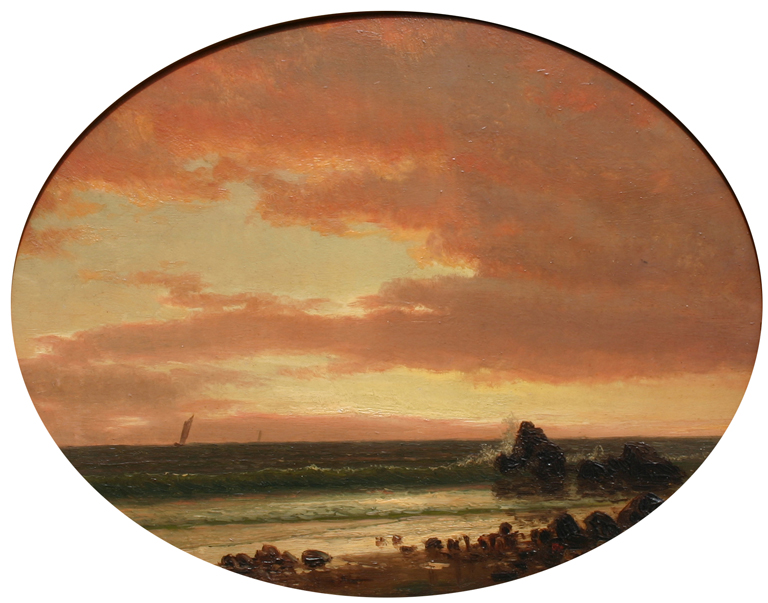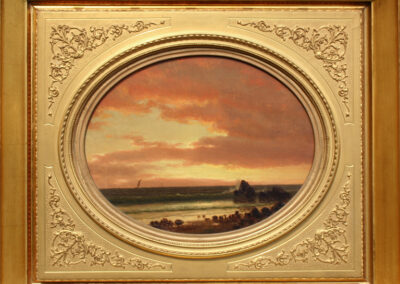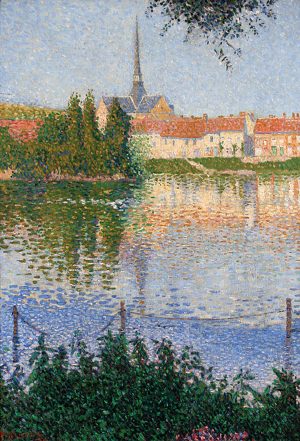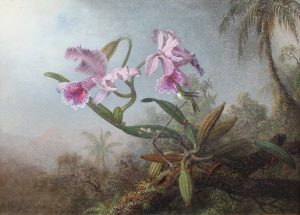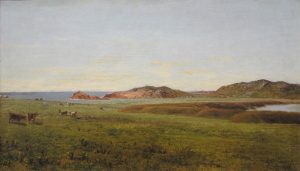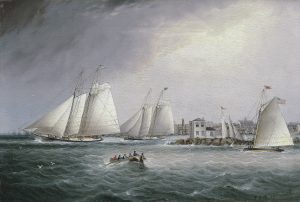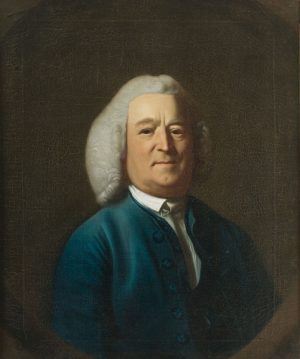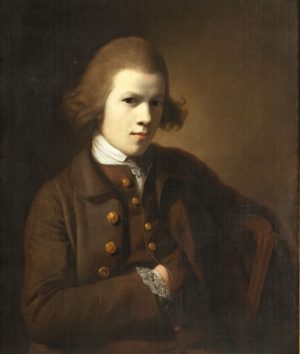Albert Bierstadt (German/American,1830-1902)
One of the most celebrated artists of his day, Hudson River School painter Albert Bierstadt was born in 1830 in Solingen, Prussia, near Düsseldorf, the son of a cooper. His family immigrated to America when Albert was two, and settled in New Bedford, Massachusetts. As a young man, Bierstadt worked for a mirror and frame factory. In 1853 he returned to Düsseldorf and studied with two American painters in residence there, Worthington Whittredge and Emmanuel Leutze. Whittredge reports that his young student spent months at a time sketching out-of-doors. He later made a sketching trip through Switzerland, over the Alps and into Italy with Whittredge and Sanford Gifford, sending paintings home along the way. Bierstadt returned to the United States in 1857. He made his first trip to the American West in 1859, accompanying Colonel Frederick West Lander, engineer of the central division of the Overland Trail, and his group across the Plains to the Rockies. He did oil studies and took many stereoview negatives of scenery and camp life from which he created paintings upon his return to New Bedford. The resulting studio paintings proved extremely popular with the American public. In time, his plein air sketches would receive critical acclaim. In 1860 he was made a National Academician. That same year, he formed a photography business in New York City with his two brothers and they issued a catalogue of the western views that he had captured. He took a second trip to the Colorado Rockies and the Yosemite Valley in 1863, and another in 1866, after which he began producing the vast, romantic landscapes that he became famous for. During the summer of 1874 Bierstadt sketched and photographed in the White Mountains of New Hampshire. He also visited Newport, Rhode Island, though his images of the Newport area are quite rare. A member of Teddy Roosevelt’s Boone and Crockett hunting club in New York, Bierstadt also recorded the wild animals of North America in his paintings. From 1877 to 1893 the artist wintered in the Caribbean for his wife’s health. Here Bierstadt produced beautiful marine oil sketches. In 1881 he spent three months painting in Yellowstone. At the height of his success the artist built a four-story stone mansion and studio, “Malkasten,” in Irvington-on-the-Hudson, sited with a panoramic view of the river five hundred feet below. The mansion burned down in 1882. His career began to suffer as a result of changing tastes. His landscapes fell out of style, and his work was rejected by the Paris Expo of 1889 and the Columbian Expo of 1893 in Chicago. He was bankrupt when he died in New York City in 1902, and his place as one of the great American landscape painters was not restored until the 1970s. Today his work is exhibited and displayed throughout the United States in collections such as: the R. W. Norton Art Gallery, the Stark Museum of Art, The Mattatuck Museum, the Ackland Art Museum, the Addison Gallery of American Art, the Albright-Knox Art Gallery, the Allen Memorial Art Museum, the Amon Carter Museum of American Art, the Anchorage Museum at Rasmuson Center, the Arnot Art Museum, the Art Institute of Chicago, the Birmingham Museum of Art, the Buffalo Bill Center of the West, the Butler Institute of American Art, the Carnegie Museums of Pittsburgh/Carnegie Institute, the Chrysler Museum of Art, the Cincinnati Art Museum, the Colorado Springs Fine Arts Center, the Corcoran Gallery of Art, the Crocker Art Museum, the Crystal Bridges Museum of American Art, the Dallas Museum of Art, the De Young Museum, the Denver Art Museum, the Desert Caballeros Western Museum, the Eiteljorg Museum of American Indians-Western Art, the Everson Museum Of Art, the Figge Art Museum/Davenport Art Museum, the Fogg Art Museum: Harvard University Art Museums, the Frederick R Weisman Art Museum, the George Walter Vincent Smith Museum, the Georgia Museum of Art, the Gilcrease Museum, the Great Plains Art Museum, the Heckscher Museum of Art, the Herbert F Johnson Museum of Art, the High Museum of Art, the Hirshhorn Museum and Sculpture Garden, the Hunter Museum of American Art, the Indianapolis Museum of Art, the Jack S Blanton Museum of Art, the Joslyn Art Museum, the Kresge Art Museum, the Lauren Rogers Museum of Art, the Los Angeles County Museum of Art, the Lowe Art Museum, the Mabee-Gerrer Museum Of Art, the Mead Art Museum, the Meadows Museum, the Memorial Art Gallery, the Metropolitan Museum of Art, the Michele and Donald D’Amour Museum of Fine Arts, the Minneapolis Institute of Arts, the Minnesota Marine Art Museum, the Mobile Museum of Art, the Mount Holyoke College Art Museum, the Mulvane Art Museum, the Museum of Art and Archaeology, University of Missouri-Columbia, the Museum of Art at Brigham Young University, the Museum of Fine Arts, Boston, the Museum of Nebraska Art, the National Academy of Design Museum, the National Cowboy & Western Heritage Museum, the National Gallery of Art, Washington DC, the National Museum of American Art-Smithsonian, the Neuberger Museum of Art, the New Bedford Free Public Library Art Room, the New Britain Museum of American Art, the New Mexico Museum of Art, the New Orleans Museum of Art, the New York Graphic Society, the New-York Historical Society, the North Carolina Museum of Art, the Oakland Museum of California, the Parrish Art Museum, the Patrick & Beatrice Haggerty Museum, the Phoenix Art Museum, the Portland Art Museum, Oregon, the Reading Public Museum, the Reynolda House-Museum of American Art, the Rhode Island School of Design-Museum of Art, the Robert Hull Fleming Museum, the Rockwell Museum of Western Art, the Ruth and Elmer Wellin Museum of Art, the Saint Louis Art Museum, the San Diego Museum of Art, the Santa Barbara Museum of Art, the Seattle Art Museum, Sewell C Biggs Museum of American Art, the Sheldon Museum of Art, the Smith College Museum of Art, the Snite Museum of Art, the Southern Alleghenies Museum of Art, the Spencer Museum of Art, St. Johnsbury Athenaeum, the Swope Art Museum, The Arkell Museum at Canajoharie, The Art Museum, Princeton University, The Brooklyn Museum of Art, The Cleveland Museum of Art , The Columbus Museum of Art, Georgia, The Columbus Museum of Art, Ohio, The Cummer Museum Of Art & Gardens, The Currier Museum of Art, The Dayton Art Institute, The Fred Jones Jr. Museum of Art, The Haggin Museum, The John & Mable Ringling Museum of Art, The Nelson-Atkins Museum of Art, The Newark Museum, The Pennsylvania Academy of the Fine Arts, The Philbrook Museum of Art, The Speed Art Museum, The Toledo Museum of Art, The University of Arizona Museum of Art, The University of Michigan Museum of Art, The White House Permanent Collection, the Thyssen-Bonemisza Collection, the Timken Museum of Art, the University of Wyoming Art Museum, the USC Fisher Gallery, the Utah Museum of Fine Arts, the Wadsworth Atheneum Museum of Art, the Walters Art Museum, the Washington County Museum of Fine Arts, the Whitney Museum of American Art, the Woolaroc Museum, the Worcester Art Museum, the Yale University Art Gallery, the Yosemite Museum, and the Zigler Museum.
View Near Spouting Rock, Newport, Rhode Island
by Albert Bierstadt (German/American,1830-1902)
| Medium | Oil |
| Medium Detail | Oil on board |
| Dimensions | 8 1/4 x 10 inches, oval |
| Signed Location | Signed with monogram and inscribed on verso View Near the Spouting Rocks, Newport, Dr. C.L. Swasey, with the compliments of the author, Albert Bierstadt |
| Date Created | c. 1857-1858 |
This artwork is no longer in our inventory
Contact Us About This Piece

